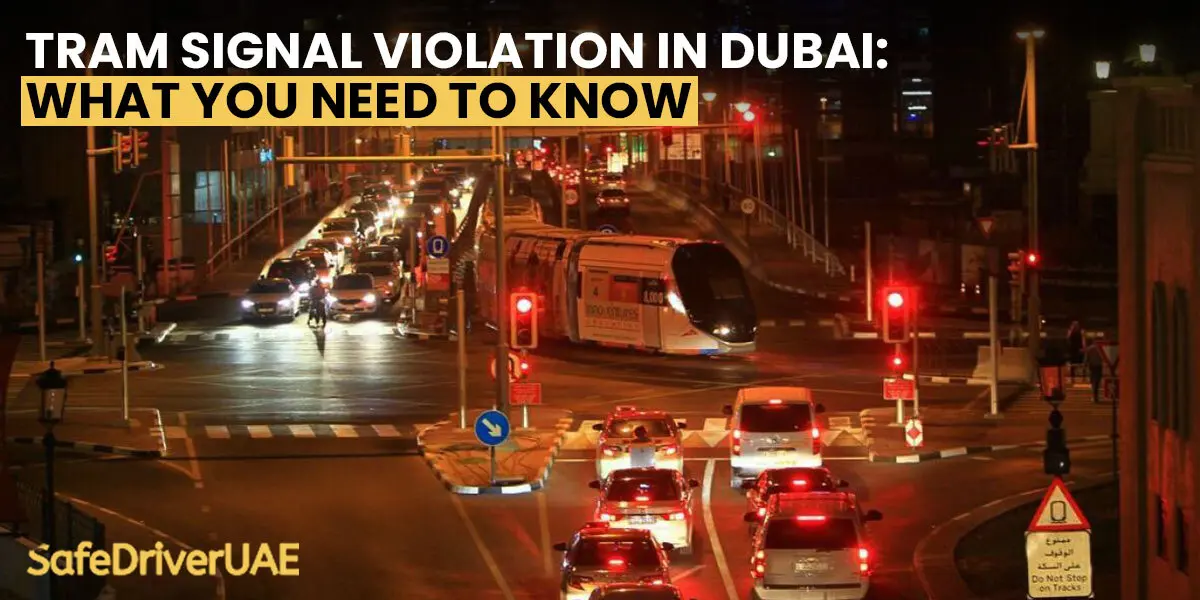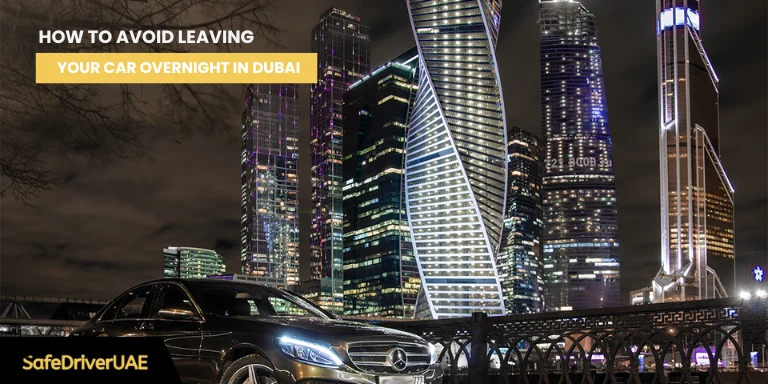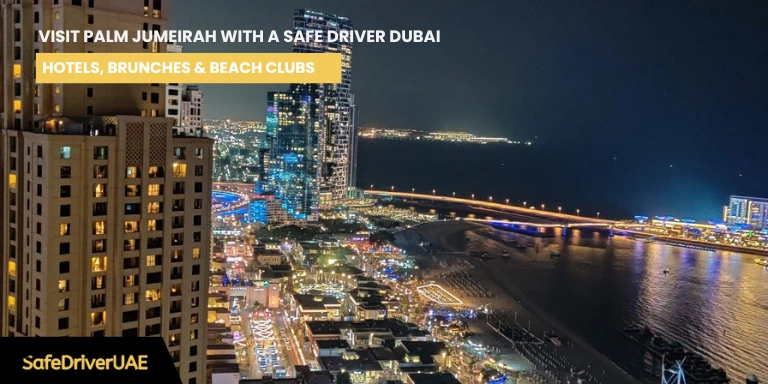Dubai, with its impressive skyline and efficient public transport network, has integrated the Dubai Tram into its urban infrastructure to provide seamless travel options in areas like Dubai Marina and Al Safouh. The tram system is designed to enhance connectivity while ensuring safety and efficiency.
However, adherence to tram signals is essential to prevent accidents and maintain smooth traffic flow. Even a safe driver Dubai service emphasizes the importance of following tram rules, as violations can lead to serious penalties and compromise road safety.
This guide offers a detailed overview of tram signal violations in Dubai, exploring what constitutes a violation, the penalties involved, safety implications, and best practices to avoid such infractions.
What Constitutes a Tram Signal Violation?
Definition of Tram Signal Violation
A tram signal violation occurs when a vehicle or driver fails to comply with traffic signals specifically designated for trams. These signals are critical for coordinating the interaction between trams and other road users. Common tram signal violations include:
- Running a Red Tram Signal: Proceeding through an intersection or crossing when the tram signal is red. This can obstruct the tram’s path and create dangerous situations.
- Ignoring Tram Warning Signals: Failing to heed warning signals that indicate a tram is approaching or that it is unsafe to cross. These warnings are often accompanied by visual and auditory alerts.
- Blocking Tram Tracks: Stopping or parking on tram tracks, which can hinder tram operations and potentially lead to collisions.
Types of Tram Signals
Tram signals are designed to manage traffic at intersections and tram crossings effectively. They include:
- Traffic Lights for Trams: Dedicated traffic lights for trams at intersections to control the flow of tram and road traffic.
- Warning Signals: Lights and sounds that alert drivers about the presence of approaching trams, usually activated when a tram is near or about to cross.
- Barrier Gates: Physical barriers that lower when a tram is approaching, preventing vehicles from crossing the tracks.
What are the Penalties for Tram Signal Violations
In Dubai, tram signal violations are treated with seriousness to ensure compliance and safety. Penalties for violating tram signals include:
- Fines: Drivers caught jumping a tram signal may face substantial fines. The penalty amount varies based on the violation’s severity and local traffic regulations. Typical fines range from AED 500 to AED 1,000. In some cases, fines may be higher for repeat offenders or severe violations.
- Points on Driving License: Accumulation of points on a driving license is another consequence of tram signal violations. Points contribute to a driver’s record and can lead to license suspension or increased insurance premiums if accumulated over time.
- Vehicle Impoundment: For severe or repeated violations, authorities may impound the vehicle. This measure serves as a deterrent to prevent future infractions and ensure compliance.
Legal Consequences
- Court Proceedings: In cases of serious violations or repeated offenses, drivers may face court proceedings. This can result in additional fines, legal sanctions, or other court-imposed penalties.
- Insurance Impact: Traffic violations, including tram signal infractions, can affect insurance premiums. Insurance providers may increase rates or impose higher deductibles for drivers with a history of traffic violations.
Which can be Example Cases
Case 1:
A driver fined AED 800 and received 4 points on their driving license for running a red tram signal at a busy intersection. The vehicle was also temporarily impounded due to repeated offenses.
Case 2:
A commercial vehicle blocking tram tracks resulted in a significant fine and court proceedings. The driver faced additional penalties due to the severity and impact on tram operations.
What are the Main Safety Implications of Tram Signal Violations
Risks to Road Safety
Ignoring tram signals can have several adverse effects on road safety:
- Increased Risk of Accidents: Failing to stop for a red tram signal or blocking tram tracks increases the likelihood of collisions between trams and other vehicles. Such accidents can cause severe injuries or fatalities.
- Traffic Disruptions: Tram signal violations can lead to traffic congestion and delays, affecting the smooth flow of both tram and road traffic. Disruptions can have cascading effects on overall traffic efficiency.
- Passenger Safety: Obstructing a tram’s path endangers passengers. Trams are designed to prioritize passenger safety, and any interference with their operation can lead to dangerous situations.
Impact on Traffic Flow and Efficiency
- Congestion: Violation of tram signals can cause bottlenecks at intersections, leading to increased travel times and congestion in affected areas.
- Operational Delays: Trams may experience delays due to blocked tracks or accidents, affecting schedules and service reliability.
What can you do to Avoid Tram Signal Violations?
To avoid tram signal violations, it’s important to follow a few key practices that help ensure compliance with traffic laws and contribute to overall road safety. Here are some strategies to help you avoid tram signal violations:
1. Know Your Tram Signals
You’re driving through a busy part of Dubai, and you see a set of signals specifically for trams. These signals look different from regular traffic lights, often showing a tram symbol or a different color pattern. The key is to pay close attention and follow these signals just like you would at a regular traffic light. When the tram signal turns red, you should stop. It’s that simple!
2. Stay Alert and Focused
Let’s say you’re driving along a route where trams are common. You’re enjoying your music, but you make sure to stay focused on the road. You notice a tram approaching in the distance, so you prepare to slow down. Keeping your attention on the road and avoiding distractions like texting helps you spot tram signals and respond appropriately.
3. Observe Speed Limits
You’re approaching an intersection with tram tracks, and you’re driving within the speed limit. This gives you plenty of time to notice the tram signal ahead and come to a smooth stop if needed. Driving at the right speed is like giving yourself extra time to make safe decisions.
4. Understand Tram Priority
Picture this: you’re at a busy intersection, and a tram is approaching. Even though the traffic light for cars is green, the tram signal shows red, meaning you should stop. Trams have the right of way, so letting them pass safely is the best choice.
5. Use Navigation Tools
Imagine you’re using your GPS while driving through Dubai. The GPS alerts you about upcoming tram tracks and signals, helping you stay aware of where to be extra cautious. Using these tools makes it easier to anticipate tram crossings and avoid any last-minute surprises.
6. Plan Your Route
Let’s say you’re driving to a new part of the city. Before you start, you take a quick look at your route to see if there are any tram lines or crossings. Being familiar with the area helps you avoid confusion and ensures you’re ready for any tram signals you might encounter.
7. Respect Tram Signals
Imagine you’re waiting at a tram crossing, and the signal is red. You see some other drivers getting impatient, but you stay calm and wait. As soon as the tram passes and the signal changes, you proceed safely. Respecting tram signals is all about being patient and putting safety first.
8. Learn from Experience
Let’s say you once made the mistake of crossing a tram signal when you weren’t supposed to. Instead of worrying, you learn from the experience. Now, you’re more cautious at tram crossings and make sure to follow the signals every time.
9. Stay Informed
Imagine you hear about new traffic regulations related to trams. You take a few minutes to read up on them, so you’re aware of any changes that might affect your driving. Staying informed helps you avoid accidental violations.
10. Ask for Help
If you’re ever unsure about tram signals or how to navigate them, don’t hesitate to ask for help. You can talk to a more experienced driver, take a defensive driving course, or even check with local authorities for guidance.




